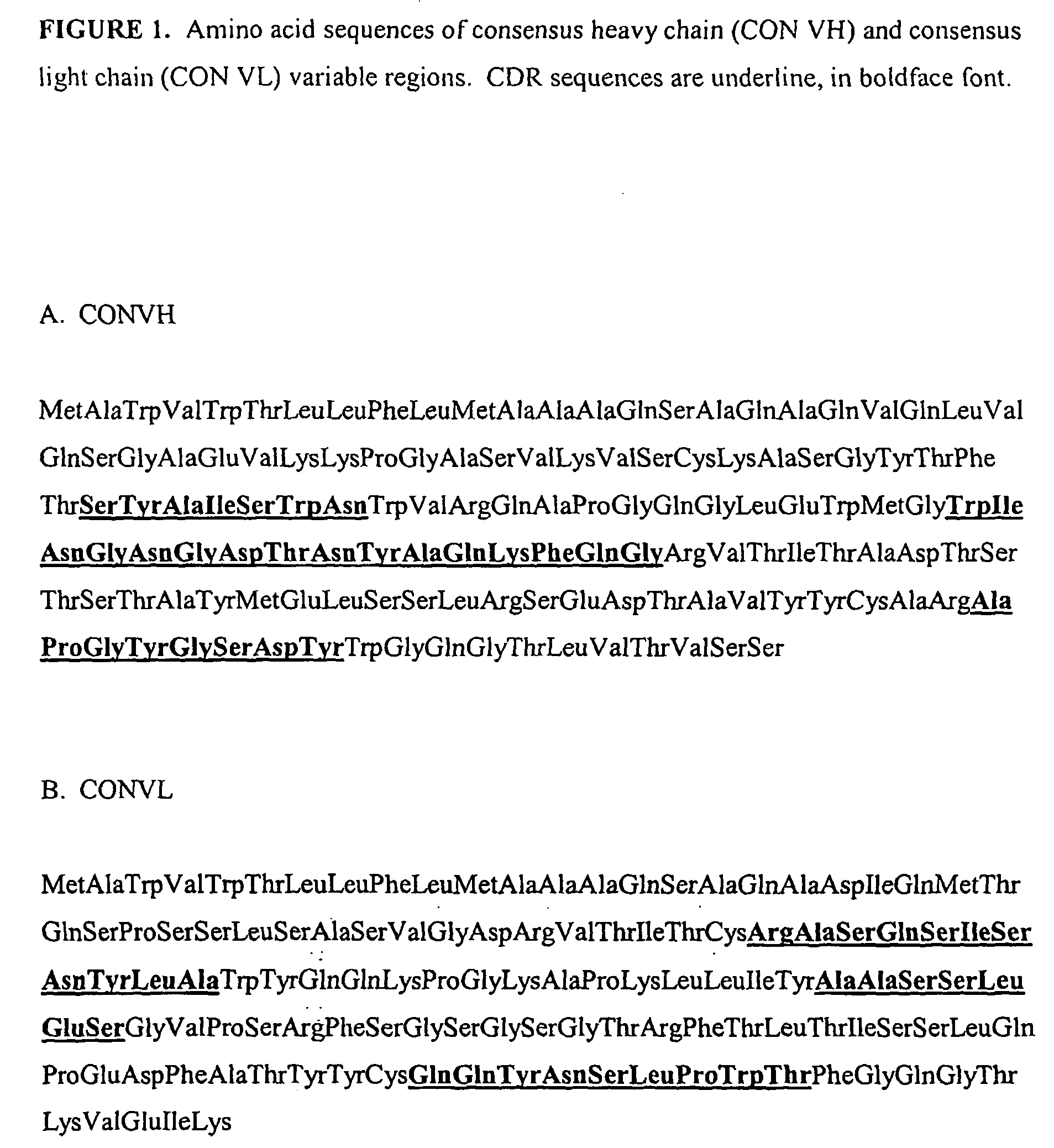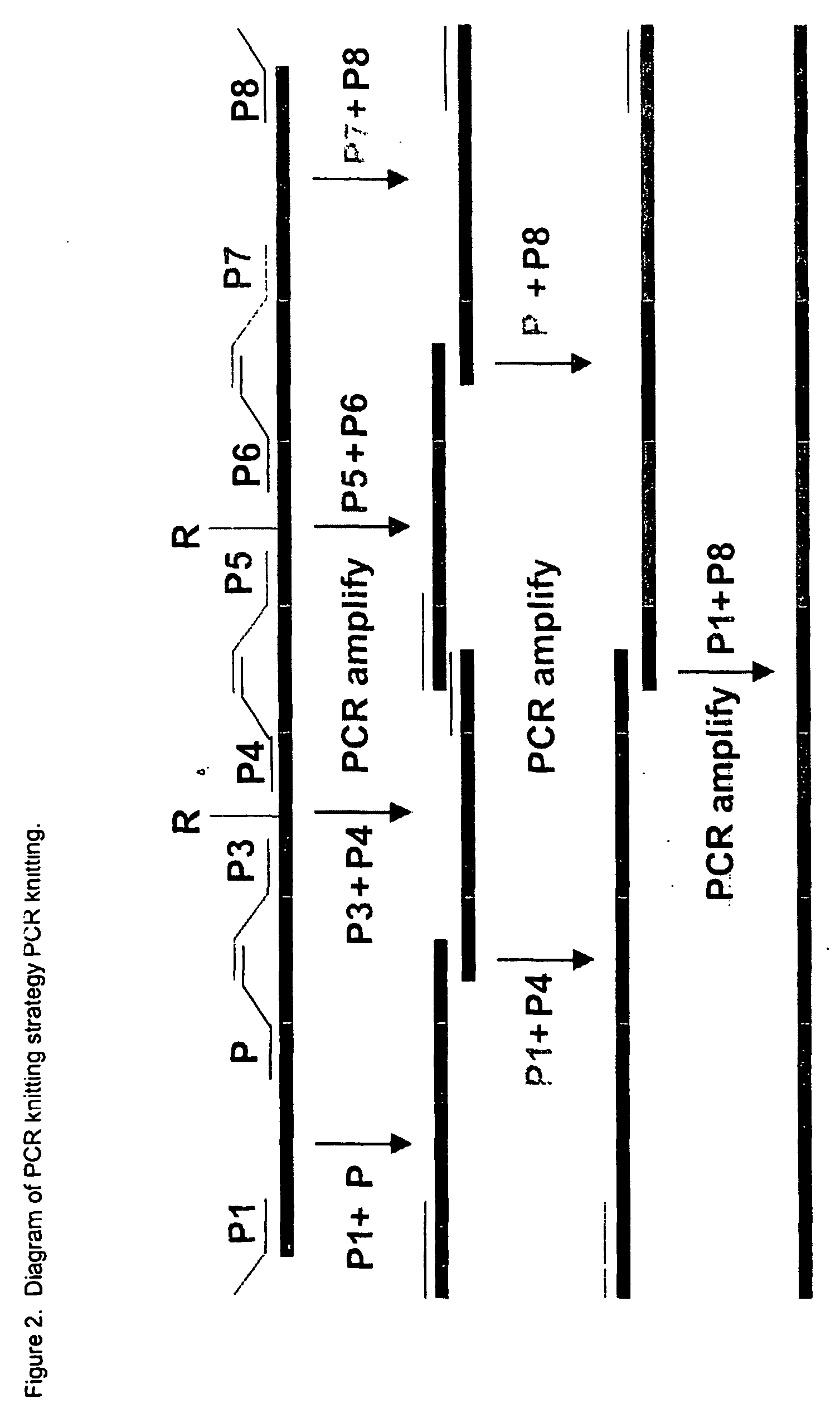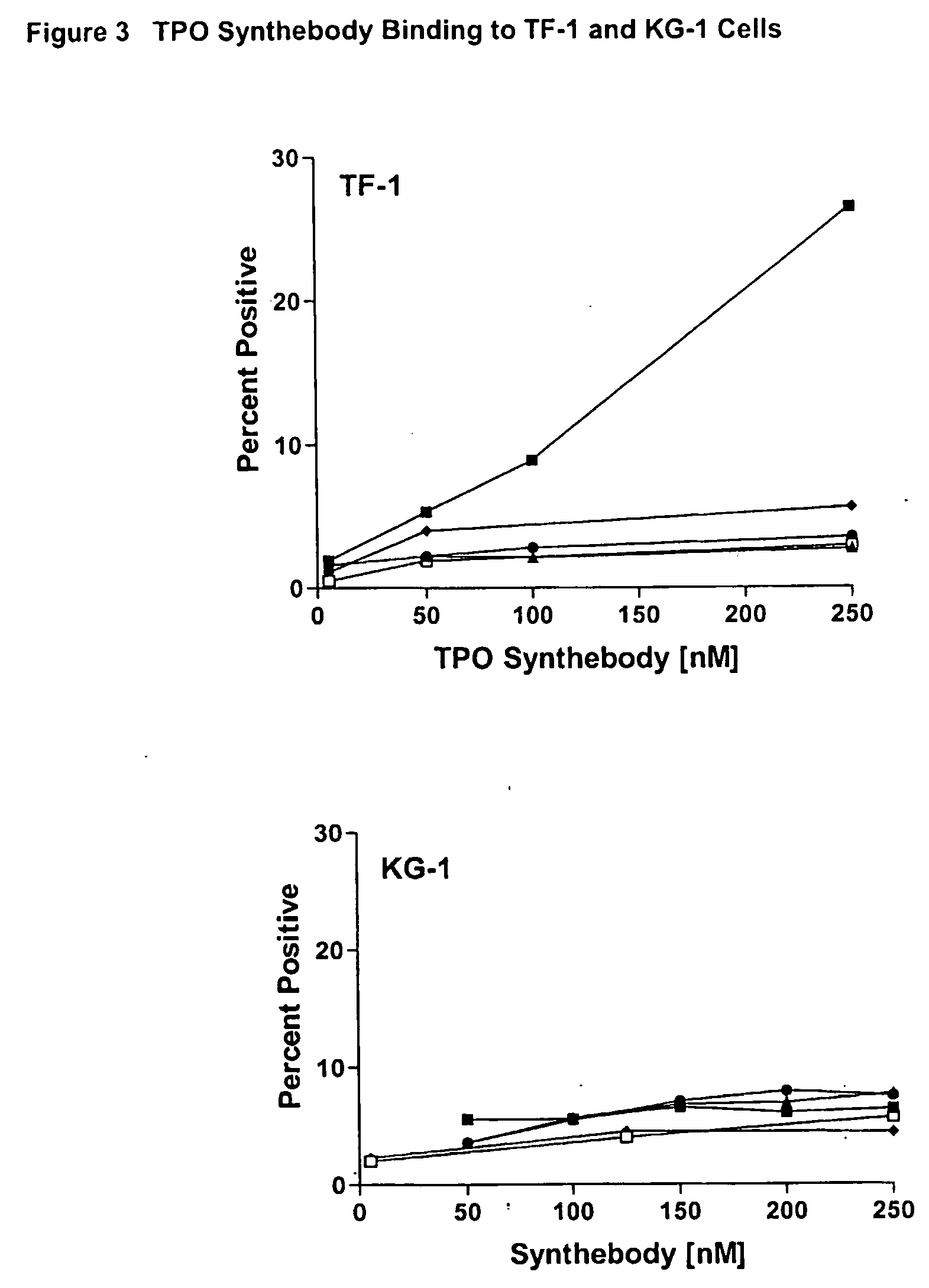Thrombopoietin(tpo) synthebody for stimulation of platelet production
a technology of thrombopoietin and synthesizing protein, which is applied in the field of thrombopoietin (tpo) synthesizing protein for stimulation of platelet production, can solve the problems of not being able to stimulate murine cfu-mk (colony-forming), weakening thrombocytopoietic activity of 3 and 3 cells, etc., and achieves little or no
- Summary
- Abstract
- Description
- Claims
- Application Information
AI Technical Summary
Benefits of technology
Problems solved by technology
Method used
Image
Examples
example 1
Construction of the Variable Region Gene Containing the MPL Binding Sequence of Thrombopoietion
[0238] The monomer or dimer of MPL-binding peptide, IEGPTLRQWLAARA, identified by screening a peptide library and shown to be highly efficient in stimulating MPL-mediated thrombopoiesis (Cwirla et al., supra; U.S. Pat. No. 6,121,238) is inserted into one or more CDRs of a synthetic antibody using the standard "PCR knitting" procedure. The length of the peptide, 14 amino acids, is sufficiently short that it can be inserted into any of the six CDRs. Further, since it has already been shown that a pseudosymmetrical dimer of the peptide IEGPTLRQWLAARA (synthesized via the and-amino groups of a C-terminal, -alanine-modified lysine) is more potent than the peptide monomer (Cwirla et al., supra), molecular modeling could be used to determine which two CDRs would most likely mimic the structural conformation of the peptide dimer.
[0239] "PCR knitting". In this protocol (see FIG. 2 and Bicknell and ...
example 2
Synthebody Expression and Purification
[0246] Once constructs are prepared, initial transfections are performed transiently in CHO-K1 cells. Co-transfections are performed using two single expression constructs (one encoding the light chain and another encoding the heavy chain of the immunoglobulin molecule) and a cationic liposomal reagent. Expression is measured at day 3 and day 7 by ELISA assay. The expressed antibody is purified using Protein-A or Protein-G column chromatography and characterized by HPLC and Western immunoblotting.
[0247] Prior to testing the ability of the synthebody to affect hematopoiesis in vivo (e.g., in model organisms), its activity is assessed in vitro by measuring (i) the ability to bind to the MPL receptor (using both direct binding studies and competition experiments) and (ii) activate MPL-mediated signaling cascades leading to changes in cell proliferation and / or differentiation and / or survival.
example 3
Assessment of Synthebody Activity by Examination of Direct Binding to MPL Receptor
[0248] 1.times.10.sup.7 KG-1 cells (Human acute myelogenous leukemia cell line) and 1.times.10.sup.7 TF-1 (Human bone marrow erythroleukemia cell line) cells were centrifuged and resuspended in 1.0 mL FACS buffer. 1.times.10.sup.6(100 .mu.l) cells were transferred to eppendorf microcentrifuge tubes (1.5 mL) and spun at 3000 RPM for 1 min and buffer was aspirated from cell pellets. Synthebody binding was analyzed by adding 100 .mu.l of 5, 50, 100, and 250 nM concentrations of TPO VLCDR2, TPO VHCDR3, and Human consensus, and 5, 50, and 250 nM concentrations of TPO VLCDR1 and TPO VHCDR1 synthebodies to cells. Synthebody binding was performed for 1 h at 4.degree. C., followed by washing 2.times. with 1 ml of FACS buffer. Cells were incubated with FITC-Goat anti-human IgG diluted 1:20 in FACS buffer (50 .mu.l / sample) for 1 h at 4.degree. C. Cells were washed 2.times. with 1.0 mL FACS buffer and resuspended ...
PUM
| Property | Measurement | Unit |
|---|---|---|
| Antigenicity | aaaaa | aaaaa |
Abstract
Description
Claims
Application Information
 Login to View More
Login to View More - R&D
- Intellectual Property
- Life Sciences
- Materials
- Tech Scout
- Unparalleled Data Quality
- Higher Quality Content
- 60% Fewer Hallucinations
Browse by: Latest US Patents, China's latest patents, Technical Efficacy Thesaurus, Application Domain, Technology Topic, Popular Technical Reports.
© 2025 PatSnap. All rights reserved.Legal|Privacy policy|Modern Slavery Act Transparency Statement|Sitemap|About US| Contact US: help@patsnap.com



